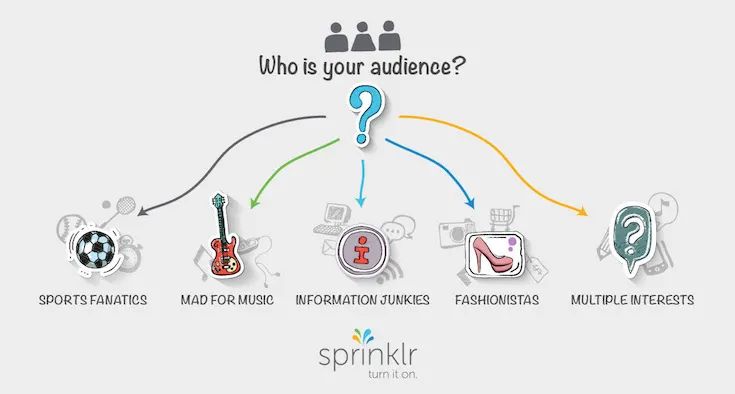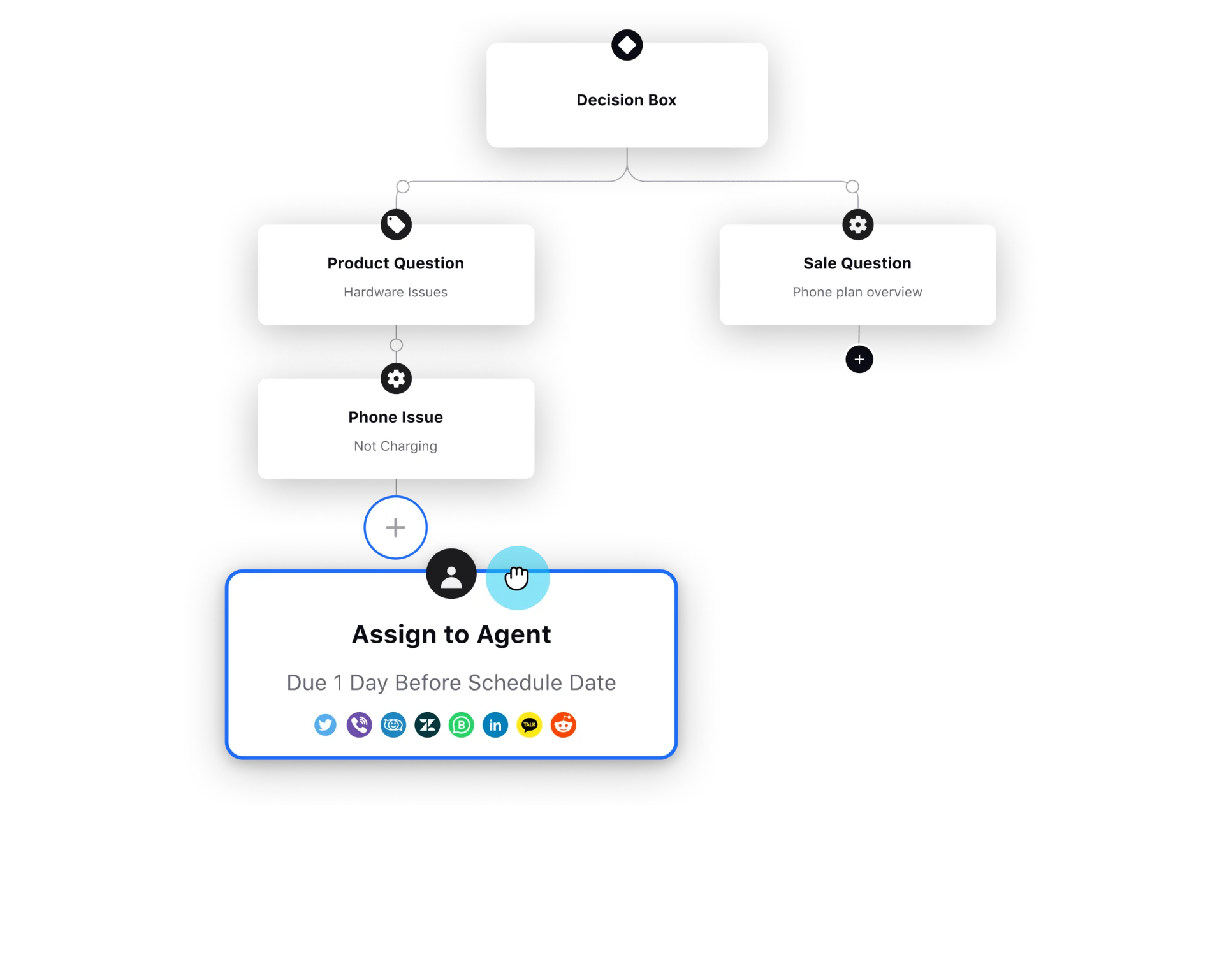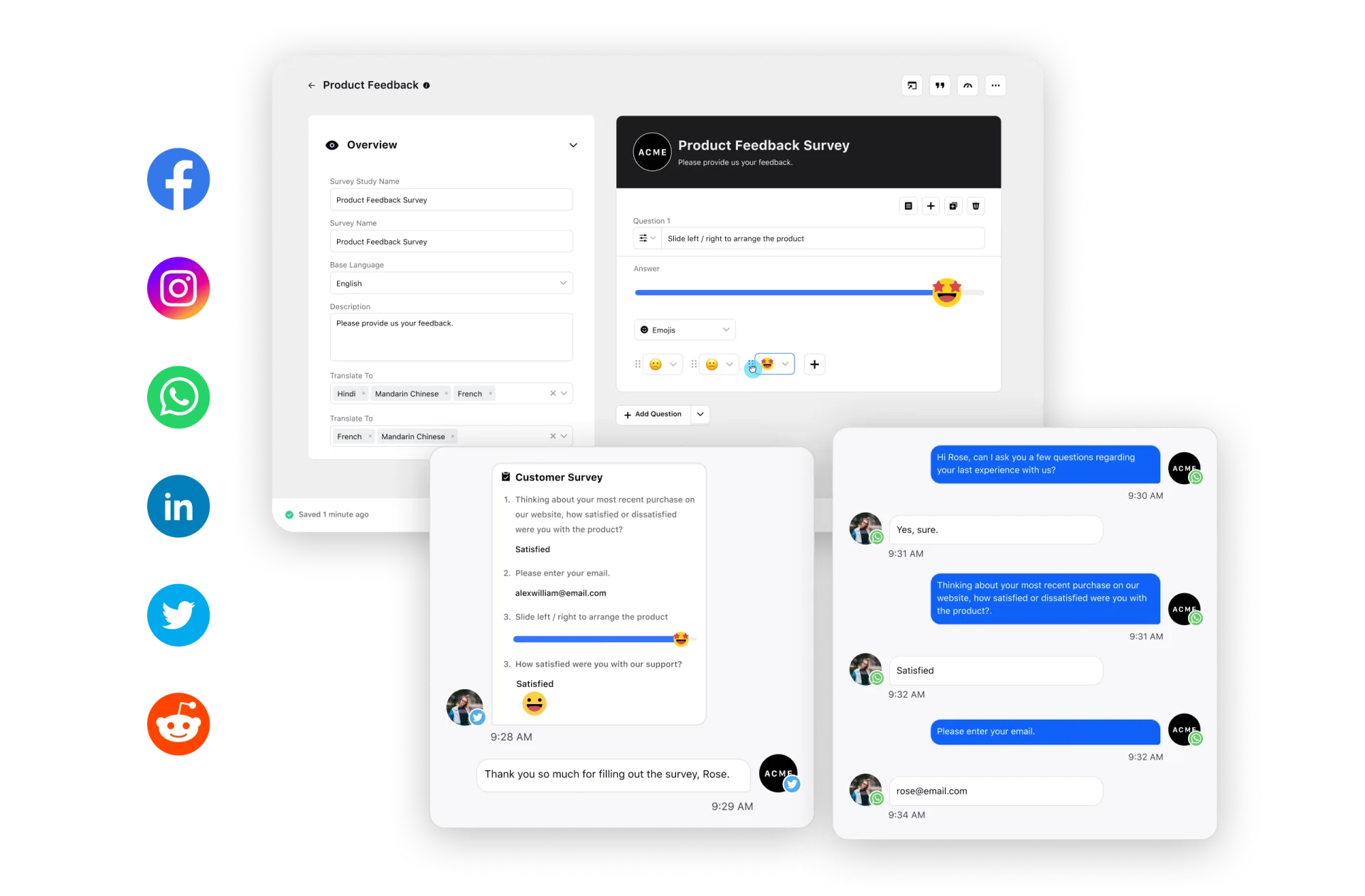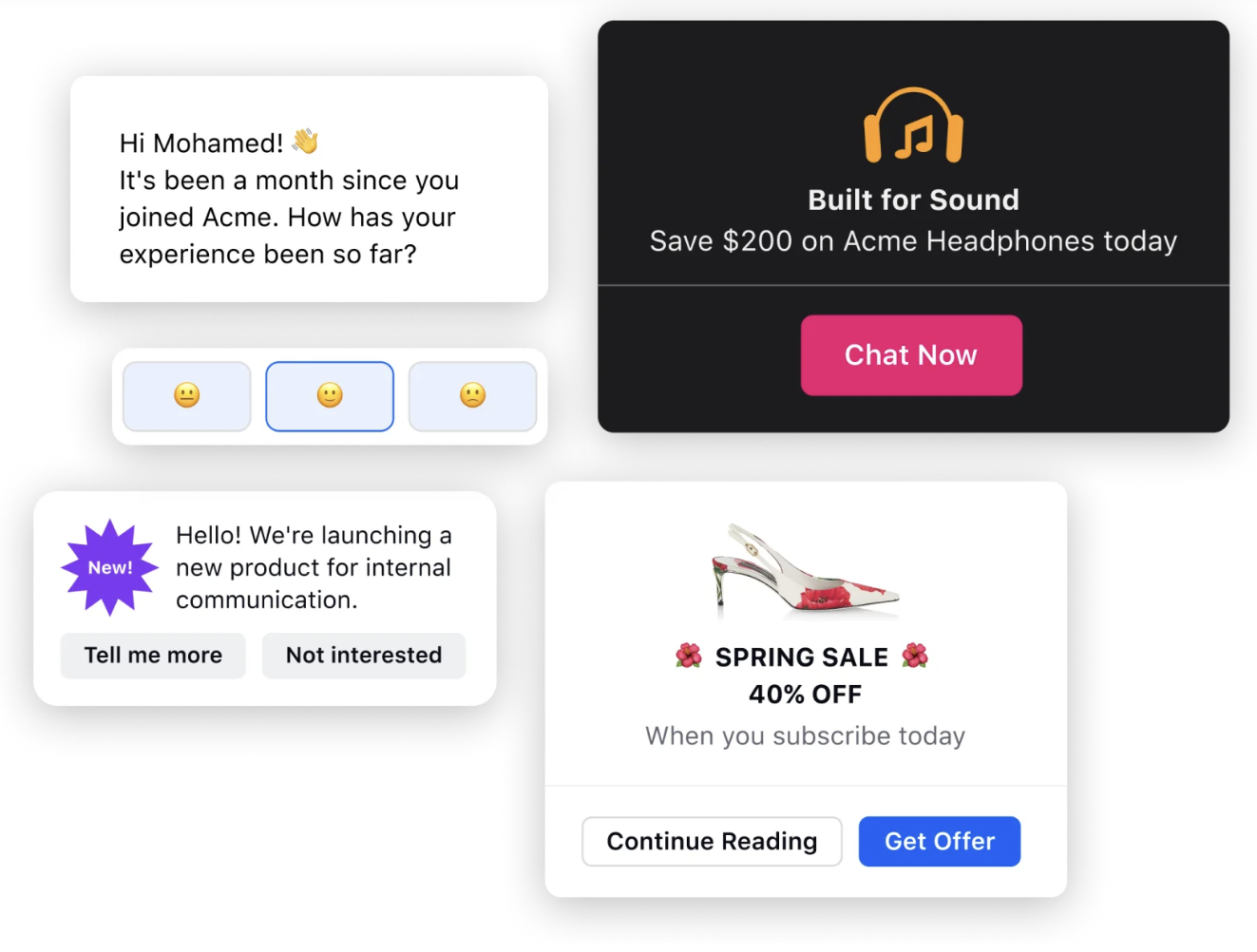What is customer experience management?
Customer experience management (CXM) is a strategic combination of methodologies, processes and technologies that businesses use to ensure positive interactions and relationships with their customers at every touchpoint throughout the customer journey.
In today's highly competitive market, where product and service differentiation is becoming increasingly difficult, the significance of CX management cannot be overstated. Customer experience management has emerged as the primary differentiator for businesses, directly influencing customer satisfaction, loyalty and advocacy. A seamless and memorable customer experience not only encourages repeat business but also generates positive word-of-mouth referrals.
However, effective customer experience management requires a holistic approach that goes beyond the domain of any single department. While the customer service department undoubtedly plays a crucial role in addressing immediate customer needs, successful CXM requires collaboration across various organizational functions, including marketing, sales, product development and operations.
CXM vs. CSM vs. CRM
In the realm of customer service, customer experience management (CXM), customer success management (CSM) and customer relationship management (CRM) hold different meanings and purposes. Here is how they differ from each other.
Aspect | CXM | CSM | CRM |
Intent | Delivering positive experiences across all customer touchpoints | Ensuring customers achieve their purpose using the products and services | Managing customer relationships for sales and service |
Goal | Building customer loyalty and brand advocacy by anticipating customer needs and offering proactive service | Empowering customers to achieve their desired outcomes and maximize value | Increasing sales, improving conversion rates and retaining customers |
Approach | Takes a proactive, customer-centric approach - it considers the entire customer journey and how each interaction impacts the overall experience | Takes a customer-centric approach, prioritizing the success and satisfaction of individual customers | Takes a company-centric approach, focusing on the company's perspective and how it can optimize interactions to achieve goals. |
Core components | Involves strategies, processes and technologies to manage customer interactions and relationships effectively | Includes onboarding, adoption and ongoing engagement to drive successful outcomes | Focuses on capturing, storing and analyzing customer data to optimize marketing, sales and service efforts |
Tools and technologies | Experience management platforms, feedback tools, journey mapping tools | Onboarding software, product usage analytics, customer health scores | Contact management systems, sales automation tools, marketing automation platforms |
Nature of relationship with the customer | Holistic, empathetic, multi-faceted | Collaborative, outcome-oriented | Transactional, data-driven |
Metrics | Net promoter score (NPS), customer satisfaction score (CSAT), customer effort score (CES) | Customer retention rate, churn rate, product adoption, user engagement | Number of leads, conversion rates, sales pipeline value, customer lifetime value |
7 Pillars of CX management
Whether you’re a novice exploring CXM for your startup or a veteran looking to transform existing customer experience strategy, check out the several foundational pillars of customer experience management.
1. Customer understanding: The first pillar involves gaining deep insights into customers' needs, preferences and behaviors. This requires employing tools such as customer surveys, feedback analysis, customer journey mapping and voice of customer (VoC) initiatives to understand the customer journey comprehensively.
2. Personalization: Personalization is crucial for tailoring interactions and experiences to individual customers. Leveraging data analytics and segmentation techniques enables you to deliver personalized content, recommendations and solutions, enhancing customer satisfaction and engagement.
3. Consistency across channels: Building trust and loyalty necessitates providing a consistent experience across all touchpoints, be it online, offline or omnichannel. Customers expect seamless transitions and consistent messaging regardless of the channel they engage with.
4. Continuous improvement: Customer experience management is an ongoing journey that requires continuous monitoring, measurement and refinement. You must actively seek feedback, identify areas for improvement and iterate on your strategies to stay responsive to evolving customer expectations.
5. Technology enablement: Leveraging technology effectively is essential for delivering personalized, efficient and innovative experiences. This includes implementing contact center CRM, AI-powered chatbots and other digital tools to streamline processes and enhance customer interactions.
6. Emotional connection: Creating emotional connections with customers is a powerful way to foster loyalty and advocacy. Beyond meeting functional needs, you should strive to craft memorable, human-centered customer experiences that resonate emotionally with customers, leaving a lasting impression.
Great employee experience = great customer experience
But how can leaders like you hit the mark?
How do you take care of your people, so they take care of your business?
Dive into this episode of our CX-WISE podcast to learn the underlying principles of putting humans at the center of your customer experience goals.
7. Employee engagement: Engaged employees are instrumental in delivering exceptional customer experiences. Investing in employee training, empowerment and recognition fosters a customer-centric culture within your organization where employees are motivated to go above and beyond to meet customer needs.
Loved by Readers: The Customer Experience Planning Guide for 2024
Top benefits of client experience management
1. Increased customer satisfaction
By prioritizing exceptional experiences at every touchpoint, CXM significantly enhances customer satisfaction levels. Satisfied customers are not only more likely to make repeat purchases but also become enthusiastic brand advocates, spreading positive word-of-mouth and attracting new customers to your business.
2. Improved customer loyalty and retention
According to CX statistics, exceptional past experiences lead to a notable 140% increase in spending, highlighting the critical role of CXM in fostering customer loyalty and retention.
When customers feel valued and appreciated, they are less likely to switch to competitors, leading to long-term relationships and revenue growth.
Read more: Average Customer Retention Rate by Industry
3. Elevated brand reputation
Providing memorable experiences that exceed customer expectations complements your brand reputation management efforts. Satisfied customers become brand advocates, spreading positive word-of-mouth and attracting new customers to your business.
4. Better customer insights
CXM initiatives generate valuable feedback and insights that give you a deeper understanding of your customers. By analyzing this data, you can identify trends, preferences, and pain points, enabling you to make informed decisions and tailor your offerings to meet the customers' needs effectively.
5. Enhanced operational efficiency
Streamlining processes and managing workflows as part of customer experience management initiatives can lead to increased operational efficiency and cost savings.
For instance, in the online e-commerce sector, implementing intuitive search functionality and organizing products in a user-friendly manner are essential customer experience management strategies. These measures ensure that customers can easily discover the products they're looking for, enhancing their shopping experience. Furthermore, simplifying the checkout process with features like one-click checkout reduces cart abandonment rates and minimizes operational costs associated with customer support inquiries.
How to improve customer experience management
Improving customer experience management can be a daunting task. Challenges such as departmental silos that impede collaboration, data overload that obscures critical insights and disengaged employees struggling to deliver exceptional service often arise. Additionally, selecting and integrating the right technology presents its own set of challenges.
Given these complexities, adopting a straightforward step-by-step approach is not just advantageous but essential, particularly when aligning various ancillary aspects takes considerable time and effort.
🧠 Understand customer preferences: Begin by creating comprehensive customer profiles using audience analysis. Utilize tools such as surveys, feedback forms and analytics platforms to gather this information comprehensively.
👥Segment your audience: Once you've collected and analyzed customer data, take the next step by segmenting your customers into distinct groups based on common characteristics such as demographics, preferences and purchase behavior.
This segmentation enables you to create targeted and personalized interactions with each group, catering to their specific needs and preferences. By treating each segment uniquely, you can strengthen customer relationships and drive meaningful engagement with your brand.
💡Pro Tip
Consider employing psychographic segmentation techniques instead of relying solely on traditional demographic segmentation. Dive deeper into customers' lifestyles, interests, values and personality traits to create more nuanced audience segments. By understanding the psychological drivers behind customer behavior, you can tailor your CXM strategies to resonate more deeply with each segment's unique motivations and preferences.

💬Personalize customer interactions: Tailor your customer-facing content, including emails, websites and text messages, to cater to the specific needs and interests of each segment. Implement personalization techniques such as dynamic content and product recommendations to enhance relevancy and customer engagement.
😊Implement sentiment analysis: Utilize sentiment analysis to gauge customer emotions and sentiment throughout their journey. By understanding how customers feel about your brand and their interactions, you can identify areas for improvement and prioritize efforts to address pain points effectively.
🚀Optimize customer touchpoints: Map out the various touchpoints along the customer journey, from initial awareness to post-purchase support. Analyze each touchpoint to identify areas where customers may encounter friction or dissatisfaction and implement strategies to streamline processes and enhance the overall experience.
💡Two cents from Sprinklr
Unlock the full potential of your customer touchpoints by integrating AI customer journey. Deploy automated systems to monitor and analyze customer interactions across all touchpoints in real time. By proactively identifying and addressing pain points or bottlenecks in the customer journey, you can ensure a smoother and more seamless experience for your customers.
💌Invest in loyalty programs: Develop and invest in customer loyalty programs to incentivize repeat purchases and foster long-term relationships. Offer special savings, perks and rewards to loyal customers to encourage them to continue doing business with your brand and increase customer lifetime value.
Must Read: Your Ultimate Guide to Building Customer Loyalty in 10 Easy Ways
📝Continuous evaluation and improvement: Regularly evaluate customer feedback and customer service metrics to assess the effectiveness of your CX management initiatives. Use customer analytics tools to identify trends, patterns and opportunities for improvement and iterate on your strategies accordingly.
💪Empower your team: Empower your CX management teams with the resources, training and tools they need to deliver exceptional customer experiences. Foster a customer-centric culture within your organization, where every employee is aligned with the goal of prioritizing customer satisfaction and loyalty.
Editor’s Pick: Customer Experience Optimization – All You Need to Know
Key features and capabilities of CXM
Customer experience management platforms offer a range of features and capabilities designed to help you deliver exceptional experiences across every touchpoint of the customer journey. Here are some key features and capabilities to look for when selecting a customer experience management solution:
Customer data management
A robust customer experience platform should enable you to gather, store and analyze customer data from various sources, including interactions, transactions and feedback. This data serves as the foundation for understanding customer behavior and preferences.
Omnichannel engagement
Today, customers interact with brands across multiple channels, including websites, mobile apps, social media and more. A comprehensive customer experience management platform should support omnichannel customer engagement, allowing you to deliver consistent and seamless experiences across all touchpoints.
Good to know: Modern AI-powered omnichannel routing platform empowers you to craft omnichannel routing logic seamlessly, eliminating the complexities of channel-specific configurations and maximizing agent utilization across various channels. With omnichannel routing, you can intelligently assign customers to the most suitable agents based on their customer service skills, capacity and historical utilization. This ensures personalized and efficient customer service delivery, enhancing overall customer satisfaction and loyalty.

Automation and workflow management
Automation features within CXM platforms streamline repetitive tasks and processes, allowing employees to dedicate their time to more strategic initiatives. Look for platforms that offer comprehensive automation capabilities across various functions such as email marketing, customer service and campaign management. By automating routine tasks, you can enhance efficiency and focus on delivering exceptional customer experiences.
Analytics and reporting
Data-driven insights are crucial for optimizing CXM strategies and measuring performance. Your customer experience management platform should be able to provide detailed insights into key metrics, trends, customer sentiments and agent performance in real time.
Customer feedback management
Gathering and acting on customer feedback is essential for continuous improvement. The ideal client experience management platform should include an omnichannel survey tool for collecting, analyzing and acting on customer feedback across various channels, allowing you to address issues and enhance the overall customer experience.

AI and predictive analytics
When selecting a CXM platform, prioritize solutions that leverage AI and predictive analytics. These advanced capabilities empower you to anticipate customer needs, personalize interactions and optimize processes with unprecedented accuracy and efficiency.
How Sprinklr AI+ helps
By leveraging the predictive analytics capabilities of Sprinklr AI+, you can gain deep insights into customer preferences and confidently forecast future consumer behaviors. This empowers you to execute precise audience targeting strategies, delivering tailored content, product suggestions and promotions that resonate with your audience.

Use cases for successful integrations of CXM for businesses
Let's explore some compelling use cases where successful integrations of client experience management can make a significant impact on businesses' performance and customer satisfaction.
Use case 1: E-commerce
❗Challenge: Today, customers are bombarded with generic recommendations, leading to purchase fatigue and missed opportunities.
🎯Solution: Powering a customer experience management platform with a recommendation engine and AI-powered predictive analytics can help companies analyze purchase history, browsing behavior and sentiment from social media to suggest truly personalized products.
📊Impact: Increased conversion rates, higher average order value and happier customers who feel understood and valued.
Use case 2: Hospitality
❗Challenge: Guests juggle multiple apps and channels for booking, communication and service requests, resulting in fragmented experiences.
🎯Solution: By integrating a customer experience management platform with the mobile app, chatbot and property management system, hotels and hospitality services can offer one-stop booking, personalized recommendations, real-time communication and contactless service requests.
📊Impact: Enhanced guest satisfaction, improved operational efficiency and increased loyalty through a convenient and connected experience.
Use case 3: Financial services
❗Challenge: Traditional banking can be frustrating, with complex processes and limited customer service channels.
🎯 Solution: By integrating CXM with online banking, virtual agents and social media listening tools, financial services can offer personalized financial insights, proactive fraud alerts and 24/7 AI self-service options through various channels.
📊 Impact: Increased customer satisfaction and engagement, improved risk management and reduced operational costs through automation and customer self-service.
Delivering exceptional customer experiences is non-negotiable for businesses aiming to thrive. However, the challenges of siloed data, generic interactions and missed opportunities persist, hindering efforts to connect with customers truly.
Sprinklr, built on the world’s first Unified-CXM platform, seamlessly integrates customer data, personalizes interactions and drives meaningful engagement at every touchpoint.
If you are seeking a collaborative ally to streamline customer experience management, we must talk!
Frequently Asked Questions
Thank you for contacting us.
A Sprinklr representative will be in touch with you shortly.
Contact us today, and we'll create a customized proposal that addresses your unique business needs.
Request a Demo
Welcome Back,
No need to fill out any forms — you're all set.



